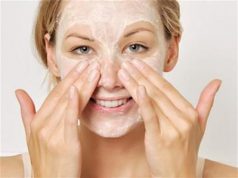Introduction
Cleansing is a fundamental step in any skincare routine, and for individuals with sensitive skin, selecting the right facial cleanser is paramount to maintaining skin health and comfort. Sensitive skin requires gentle yet effective cleansing to remove impurities without causing irritation or dryness. This comprehensive guide explores the nuances of sensitive skin care and offers valuable insights into choosing an appropriate facial cleanser, ensuring that the cleansing process supports, rather than compromises, skin health.
Understanding Sensitive Skin
Sensitive skin is characterized by its heightened response to various stimuli, including environmental factors, skincare products, and internal imbalances. It often exhibits symptoms such as redness, itching, burning, and dryness, signifying a compromised skin barrier. Sensitive skin types may react adversely to harsh chemicals, fragrances, and abrasive materials, emphasizing the need for gentle and non-irritating skincare products, including facial cleansers. Understanding the unique nature of sensitive skin is crucial in selecting a cleanser that effectively cleanses while maintaining skin balance.
Challenges of Cleansing for Sensitive Skin
Cleansing sensitive skin presents specific challenges, primarily centered around the need to remove impurities, excess oil, and makeup without disrupting the skin’s natural protective barrier. Harsh cleansers with potent surfactants can strip the skin of essential moisture, leading to dryness, tightness, and exacerbating sensitivity. Moreover, residue from inadequately rinsed cleansers can further irritate sensitive skin, making it essential to choose a cleanser that thoroughly cleanses without leaving a residue or causing inflammation.
Ingredients to Avoid in Facial Cleansers for Sensitive Skin
When selecting a facial cleanser for sensitive skin, it’s crucial to avoid certain ingredients that are known to trigger adverse reactions. Harsh sulfates, such as sodium lauryl sulfate and ammonium lauryl sulfate, are common in many cleansers and can be overly drying and irritating for sensitive skin. Similarly, artificial fragrances, alcohol, and abrasive exfoliating particles can compromise the skin’s barrier function and contribute to discomfort. By steering clear of these potential irritants, individuals with sensitive skin can reduce the likelihood of adverse reactions when cleansing.
Look for Gentle and Non-Irritating Formulations
Opting for cleansers specifically formulated for sensitive skin is essential. Look for products that are free from harsh chemicals, synthetic fragrances, and alcohol. Instead, seek out mild, fragrance-free, and hypoallergenic cleansers that are designed to respect the skin’s natural balance. Products labeled as “gentle,” “calming,” or “for sensitive skin” often indicate formulations tailored to minimize adverse reactions, making them ideal choices for individuals with sensitive skin.
Consider Cream or Lotion Cleansers for Added Moisture
Cream or lotion cleansers offer a comforting alternative for sensitive skin, providing gentle cleansing while imparting moisture to the skin. These formulations often contain emollients and hydrating agents, making them especially suitable for the winter months when dryness is a common concern. Cream or lotion cleansers effectively remove impurities without stripping the skin of its natural oils, thus contributing to a more balanced and comfortable cleansing experience for sensitive skin types.
Balancing Cleansing Efficacy with Gentleness
While gentleness is a top priority for sensitive skin, it’s equally important to ensure that the chosen facial cleanser effectively removes makeup, sunscreen, and impurities. Look for cleansers that strike a balance between cleansing efficacy and gentleness, as thorough cleansing is crucial for maintaining healthy skin. Micellar waters and gentle, non-foaming cleansers can effectively remove debris and makeup without the need for harsh surfactants, offering a well-rounded cleansing experience for sensitive skin.
pH-Balanced Cleansers for Sensitive Skin
Maintaining the skin’s natural pH balance is integral to skin health, particularly for individuals with sensitive skin. Cleansers with an appropriate pH level can help preserve the skin’s acid mantle, the protective barrier that defends against environmental aggressors and microbial colonization. Opt for pH-balanced cleansers, typically indicated on product labels, to ensure that the skin’s natural balance is maintained throughout the cleansing process, minimizing the risk of irritation and dryness.
Patch Testing New Cleansers
Before incorporating a new facial cleanser into your daily routine, it’s advisable to conduct a patch test to assess its compatibility with your skin. Apply a small amount of the cleanser to a discreet area, such as the inner forearm, and monitor for any adverse reactions over 24 to 48 hours. This preliminary test helps identify potential sensitivities before applying the product to the face, reducing the risk of widespread irritation or allergic reactions.
Incorporating Double Cleansing with Sensitivity in Mind
Double cleansing, a skincare method popularized by Korean beauty routines, involves using an oil-based cleanser followed by a gentle foaming or cream cleanser. For individuals with sensitive skin, the oil-based cleanser should be chosen with care, ensuring it is non-comedogenic and free from potentially irritating fragrances. When selecting the secondary cleanser for double cleansing, opt for a mild, non-foaming formula to minimize disruption to the skin barrier while effectively removing any remaining impurities.
The Impact of Water Temperature on Sensitive Skin
The temperature of water used during cleansing can significantly impact the skin, especially for those with sensitive skin. Hot water can be excessively drying and may exacerbate skin sensitivity, while very cold water can constrict blood vessels and potentially increase skin reactivity. Choose lukewarm water for cleansing to minimize the impact on the skin’s natural moisture levels and to reduce the risk of triggering adverse reactions or discomfort.
Rinsing Techniques for Sensitive Skin
Proper rinsing is essential to remove all traces of cleanser from the skin, as residual product can contribute to irritation and dryness in individuals with sensitive skin. When rinsing, use gentle, circular motions to ensure thorough removal of the cleanser, paying particular attention to areas such as the hairline and jaw where residue can accumulate. Careful and thorough rinsing is key to minimizing the risk of post-cleanse discomfort or adverse reactions.
Seeking Professional Guidance for Severe Sensitivity
In cases of persistent or severe sensitivity, seeking guidance from a dermatologist or skincare professional is advisable. These experts can provide personalized recommendations, assess your skin’s specific needs, and recommend formulations tailored to your individual requirements. Additionally, they can offer insights into underlying skin conditions that may contribute to sensitivity, ensuring that your chosen facial cleanser aligns with your skin’s unique characteristics and concerns.
Conclusion
Cleansing is a cornerstone of skincare, and for individuals with sensitive skin, it’s crucial to approach this step with care and consideration. By understanding the specific needs and challenges associated with sensitive skin, and by selecting a facial cleanser that prioritizes gentleness and efficacy, individuals can maintain a healthy and balanced complexion. Through mindful product selection, awareness of ingredient sensitivities, and attentive cleansing techniques, those with sensitive skin can navigate their skincare routines with confidence, knowing that their chosen facial cleanser promotes skin comfort and well-being.





